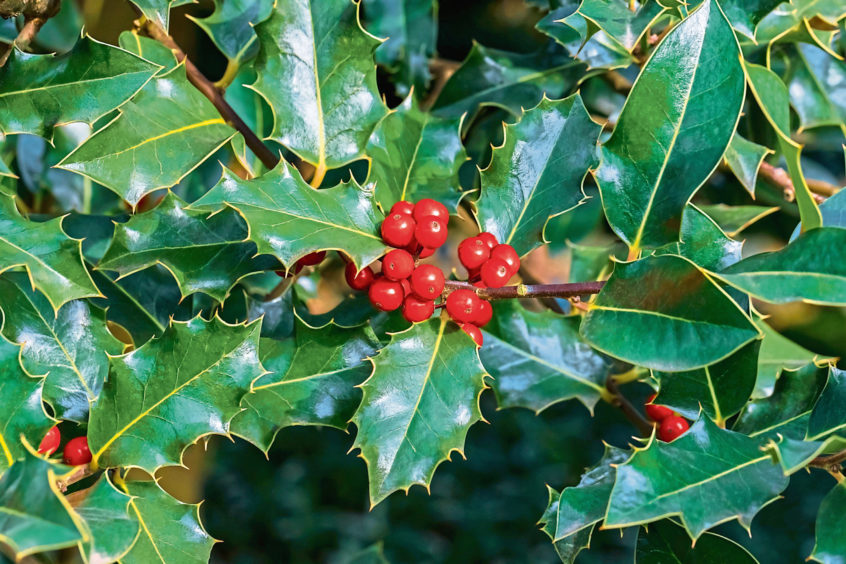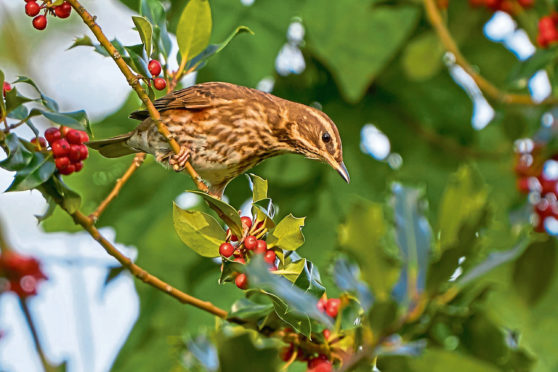In mid Deeside lies the wonderfully wild area known as the Forest of Birse, and on one of its heather-clad hills, a random scattering of holly trees invariably catches my eye.
The holly might seem an unlikely moorland tree, but they are quite frequent here, and I enjoy finding them because they provide variety to the landscape. Usually I will pause beside one for a moment to appreciate their symmetry and listen to the whisper of the wind through the branches.
And now is a perfectly poignant time to appreciate these prickly gems, for the association between Christmas and the holly is so closely entwined, it is impossible to imagine one without the other.
How it became an emblem of Yuletide is very much guesswork, but even in pre-Christian times the holly was much revered. During the short dark days of winter, the sharp spines and red berries of the holly were regarded as powerful fertility symbols and a charm against witchcraft. According to the naturalist Richard Mabey in Flora Britannica these qualities were “….easily accommodated by Christianity, holly standing for the crown of thorns and the berries for Christ’s blood”.
These scattered hill hollies, such as at the Forest of Birse, are almost certainly the result of their seeds being deposited by bird droppings. In autumn and early winter, their bright red berries are a magnet for fieldfares, redwings, mistle thrushes and blackbirds. Of course, only a tiny number of deposited seeds ever germinate, but enough do so for the trees to become part of the landscape.

There are male holly trees and female ones, with only the latter bearing those glistening scarlet berries.
The most compelling feature of the holly is the evergreen, glossy and waxy leaves. If one avoids the sharp spines on the margin, the leaves are pleasant to the touch. Their thorniness affords some protection from browsing animals such as deer – the prickliest leaves are on the lower branches, those higher up tending to be more smooth-edged.
These spines, however, don’t seem to totally deter domestic beasts, for holly leaves offer some nutrition and in the past farmers cut the boughs as a source of winter food for sheep and cattle. Equally useful is the ease that a holly can be trained into a formidable hedge or boundary enclosure for a field.
There is still the widespread belief that felling a holly will bring ill luck, which no doubt played a role in helping the tree prosper over the centuries.
Thus, behind that Christmas holly wreath hanging on the front door lies a most intriguing story of a tree that is engrained in our folklore and which brings real vibrancy to the landscape. Or as the 19th century poet Robert Southey so aptly put it: But when the bare and wintry woods we see, What then so cheerful as the Holly-tree?
Info
There are many cultivated varieties of holly with different shapes and alternative foliage that are popular as ornamental trees and hedges. Some trees can live for as long as 300 years.










